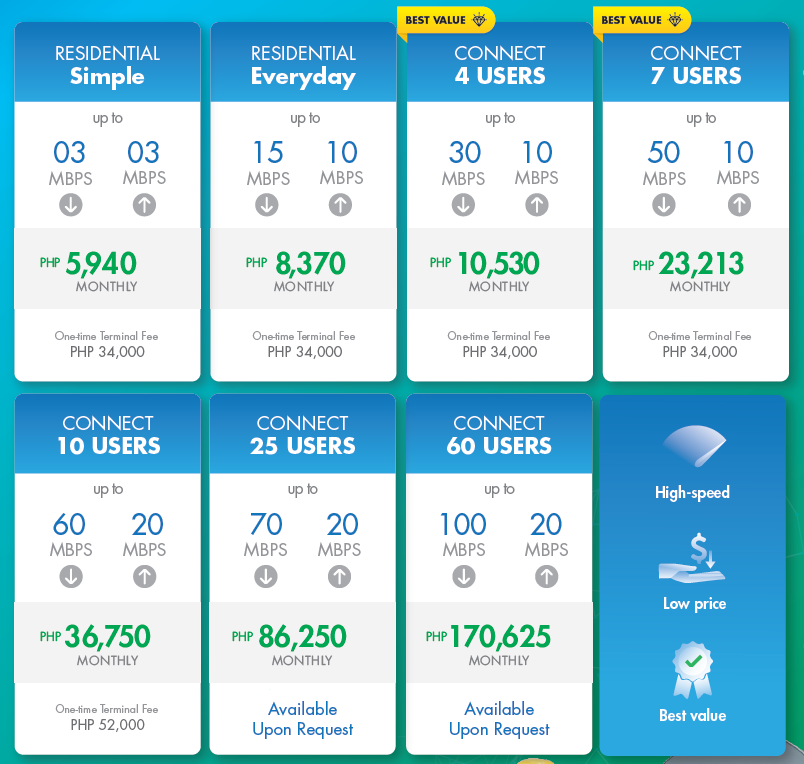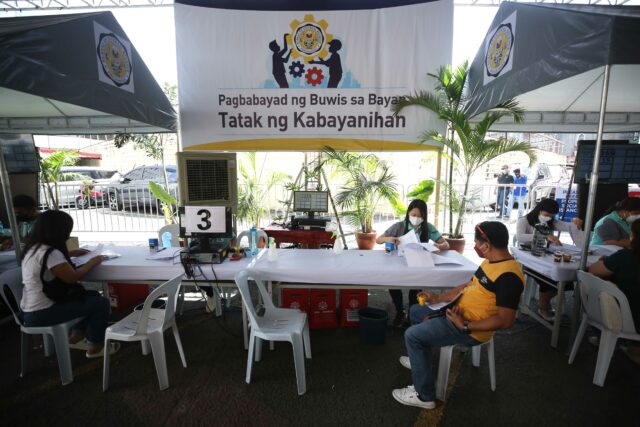Boosting financial inclusion through satellite internet

One of the fundamental characteristics of any modern developed economy is near-universal financial inclusion, where all citizens have access to a formal financial system. More than ever, banking depends on internet connectivity to support modern digital solutions.
Although the number of Filipinos with access to financial accounts has rapidly grown in recent years, the Bangko Sentral ng Pilipinas found that 44% of the adult population still did not own a financial account in 2021. That represents just over 34 million people who do not have a formal account to save money and receive interest; send or receive remittances, income, and benefits; and make day-to-day payments.
Satellite Broadband can enhance financial inclusion
With over 7,000 thousand islands and jungle-covered mountains, the Philippines is a stunning nation. It’s also a nation that’s difficult to connect with traditional telecommunications technology.
Fiber cables are expensive and difficult to lay in such small communities. Another challenge: monsoon season. Every year, this natural event damages cables and tower structures, cutting communities off. Satellite broadband is the fastest and most cost-efficient means to distribute bandwidth to rural and other underserved areas.
Using satellite technology, Kacific has been able to deliver an alternative to fiber connection that is dependable, high-speed, and affordable for rural and remote areas. The first Ka-band High-throughput Satellite, Kacific1, was launched in 2019 as a geostationary satellite. Kacific has concentrated spot beams that cover all the remote areas — from Batanes to Palawan and even all the way to Sulu. These spot beams are high power, resulting in availabilities between 99.5% and 99.9%.
Kacific’s Ka-band technology provides higher output in small 1.2-m antennas or terminal kits, making it simple and fast to install. This also means higher download and upload speeds that can provide better internet performance.
Additionally, Kacific can mitigate the effects of rain fade through diverse uplink availability, having two local teleports located in Subic Bay and Clark as its backup sites to ensure that connectivity remains available even in inclement weather.
Satellite connectivity has a proven track record for data security – a vital need in the financial sector. With connecting rural areas key to improved financial inclusion, the Government and private sector can both play a part.
Working in partnership with Kacific, Internet Service Providers (ISPs) can provide last mile connectivity solutions for banks and cash agents as well as local communities so they can access digital finance.
TBGI, a local ISP of Kacific, offers unlimited plans starting at ₱5,940 in the Philippines. Terminals are offered for a one-time terminal fee of ₱34,000 or ₱52,000 depending on the size of the plan. A one-time installation fee of ₱10,000 is charged by distributors to install the terminal kit in a specific area.

Safe banking for businesses
The Philippines is prone to natural disasters. This can cause massive disruption to communications by knocking out phone lines and cell towers and damaging fiber-optic infrastructure. But with satellite broadband access, communities can stay connected to essential banking and other services.
Kacific Enterprise Backup keeps business safe from disruptions to regular terrestrial and mobile broadband connectivity. Any financial institution can easily install Kacific’s satellite as a hot backup site in the event of fiber cuts or cable downtime, at a small fee. Acting like an insurance plan for the primary connectivity, the backup solution ensures that the bank will be fully operational 100% of the time. ATM withdrawals and POS systems should be available at least 99% of the time, especially during disaster scenarios, where preserving continuity becomes the top priority.

Satellite internet increases financial services’ reach
Kiram Irilis is a Schools Division Superintendent at DepEd Division, Sulu. Their office uses the satellite internet mainly to let Land Bank’s Automated Teller Machines communicate through a host computer en route to the bank’s nearest data center so the financial transaction will be processed. The ATM is situated inside the DepEd Compound in Jolo, Sulu.
“Before installing the internet of TBGI powered by Kacific for our ATM, we need to go to the nearest Land Bank ATM which is 8 kilometers away from our office just to withdraw our salary. In addition, the said machine is frequently in offline operation mode. Now, we don’t experience offline mode when using the ATM, we also don’t have to take long walks just to withdraw money, and we are eased from the long queue, especially during payday.”

Better internet connectivity and greater financial inclusion
In March 2021, Philippines’ former President Duterte, signed an executive order EO127, allowing more entities to provide satellite broadband services to far-flung communities, with the specific goal of boosting financial inclusion. This is intended to work alongside the rollout of the country’s new National Identification system, and it has already seen over 5 million unbanked Filipinos open transaction accounts with Land Bank alone.
Meanwhile, President Ferdinand “Bongbong” Marcos Jr. noted in his first State of the Nation Address on July 27, the government’s effort to increase digital connectivity in the Philippines. Part of the plan is to connect the country’s Geographically Isolated and Disadvantaged Areas (GIDA) via his ‘Broad Band ng Masa’ project.
For isolated communities, satellite broadband bridges the gap and allows fintech to flourish. With the Government and private sector working together, it’s possible to connect rural clients and small-island economies.
To learn more about reliable, affordable, and high-speed satellite internet, contact TBGI at 0917 583 7971 or learn more on www.tbgi.net.ph.
For more information on Kacific’s satellite technology, visit www.kacific.com or contact sales@kacific.com.
Apply to be a Kacific Authorized Distributor today, visit https://kacific.com/distributor-network to know more.
Spotlight is BusinessWorld’s sponsored section that allows advertisers to amplify their brand and connect with BusinessWorld’s audience by enabling them to publish their stories directly on the BusinessWorld Web site. For more information, send an email to online@bworldonline.com.
Join us on Viber to get more updates from BusinessWorld: https://bit.ly/3hv6bLA.



 Visit the CHERY booth at the 2022 PIMS in World Trade Center to take a closer look at the game-changing Tiggo 8 PRO lineup and test-drive activities.
Visit the CHERY booth at the 2022 PIMS in World Trade Center to take a closer look at the game-changing Tiggo 8 PRO lineup and test-drive activities.











